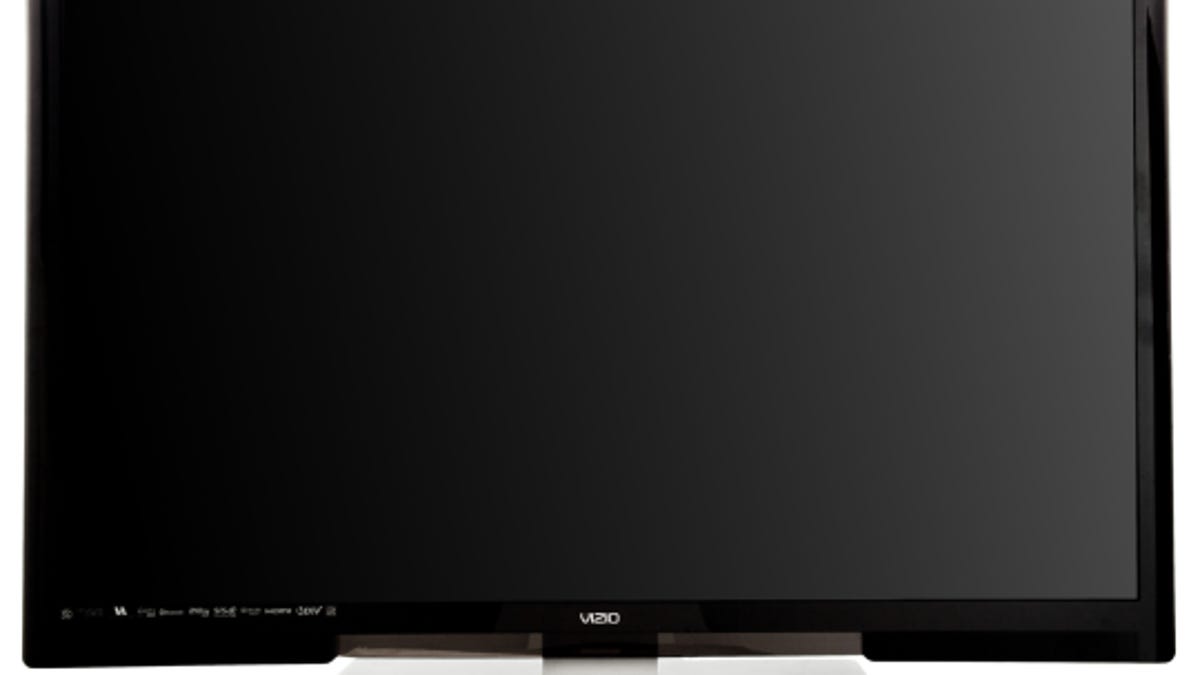Vizio M3D0SR series: Quick take
The Vizio M3D0SR series offers some of the best blacks available on an LCD for the price, but there are significant differences between each of the models.

If you're looking for a TV that offers the blacks of a plasma with the energy-saving benefits and slimness of an LCD, then the M3D0SR range from Vizio may be of interest to you.
"Plasma-like blacks?" you ask. Almost, yes. The Vizio's Smart Dimming is able to give excellent contrast levels.
Most CNET TV reviews are based on an entire series as, according to manufacturers, most TVs in a series are very similar. But the 46-inch and 55-inch M3D0SR here are quite different. In what is an interesting business decision, the three models in the Vizio M3D0SR series aren't just different-sized versions of the same thing--most TV ranges are like Russian Matryoshka dolls--but appear to be different TVs altogether.
We received two Vizio TVs--the M3D550SR and the M3D460SR--for review, and they act like they're from another series. The most obvious difference is that the 42-inch and 55-inch are matte screens while the 46-inch is glossy. As an experiment we tried applying the 55-inch calibration settings to the 46-inch, and due to the differences, the picture looked terrible. It is for these reasons we decided to review the 55-inch for its potential to perform better in a bright room and leave the 46-inch for a hands-on.
For a full review on the M3D550SR see here.
For the money, the 42-inch M3D550SR packs in a lot of features with passive 3D the most prominent. Despite its problems with interlacing, it's quite likely that passive 3D will become more prevalent next year--people don't like paying lots of money for 3D glasses and they find cross-talk distracting. Hence, the included four pairs of Vizio glasses are more likely to find favor with consumers who only watch a 3D movie on special occasions.
The television is an edge-lit Razor LED featuring Smart Dimming, which behaves similarly to that on LG's LW5600. It uses a series of LEDs along the edge of the TV and dynamically lights them in strips across the screen in response to light and dark content. The only drawback to this kind of technology is that it can cause blooming when trying to illuminate light areas surrounded by black.
Other features include a 240Hz smoothing mode, onboard 802.11n networking, and four HDMI ports.
Based on the image quality tests we performed with the 55-inch we'd say that it's likely--but not assured--the 42-inch will behave similarly due to the matte screen. We liked the 55-inch as its Smart Dimming system was able to bring out fine details lost on other LCDs at the same price--even the similar LG LW5600. The only drawback? Lag: it was a lot slower to show a picture from black, and quick cuts sometimes didn't show at all. Color performance was decent, but only with a certain amount of tinkering--leaving the TV in movie mode made everything a bit too blue.
At $989 we'd be seriously tempted to trade up to the seriously impressive 50-inch Panasonic ST30 plasma for the same price, which also offers active rather than passive 3D. Based on tests using the 55-inch Vizio, the ST30 would also outperform the little 42-incher on 3D films.

